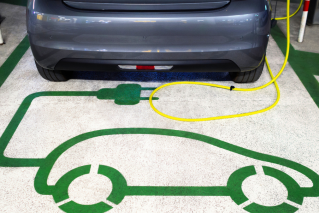Michael Pascoe: A decade of lies exposed, now to get on with the job

“The biggest deficit since World War II” was the important phrase repeatedly linked to Josh Frydenberg’s economic update on Thursday.
What’s been missed is why it is important.
No, it’s not the size. It’s the reminder that we’ve had worse before and came out of it without bone-crushing austerity or imposing a massive tax burden.
We grew out of our World War II debt and deficit, a vibrant young nation bouncing back from wartime austerity, investing in its future, enjoying much higher immigration and natural population growth than we’ve become used to, luxuriating in strong real wages growth.
Reserve Bank deputy governor Guy Debelle explained earlier this month that as long as GDP growth was greater than the interest rate the government pays, the debt is fiscally sustainable.
As Euan Black explains, the interest rate the government is paying to borrow is very low indeed and our debt, even with these fat deficits, is not very high on a global scale.
Throwing in a healthy amount of inflation eats away at the debt as well.

Australia’s population growth, 1901-02 to 2016-17. Graphic: TND
Growing GDP shrinks the debt as a percentage of GDP.
While the Australian government is not a household for budgeting purposes – and politicians who use that analogy are either incompetent or deceitful – let me repeat an example I’ve used before from British commentator Anthony Peters:
“I occasionally refer to an elderly friend, long retired in Devon, who tells of the first house he bought for his wife and himself in Caversham by Reading for which he paid £5000. He watched it trade at £50,000 and some years ago again at £500,000.
“Had he, for argument’s sake taken out a £4000 mortgage when he bought it and had he, again for argument’s sake, never sold the place then, assuming the mortgage were still at the original level, been deleveraged from 80 per cent to 0.8 per cent. That is what I mean by inflation.
“The £495,000 which would have been added to his wealth would not be value-added created by him or by anybody else but a free gift from Mr Inflation.”
Thus, for all the scary headlines, the debt the government is piling up is indeed manageable, exposing the decade of lies the Coalition has told about the (much smaller) level of debt the Labor government ran up to keep Australian out of recession during the GFC.
It’s a point former PM Kevin Rudd took to Twitter to graphically make.
Tweet from @MrKRudd
Of course, old habits will die hard.
You can rely on deeply furrowed brows and stern warnings about the amount of interest the government pays, money that could be spent on better things.
A little perspective on that:
Let’s round up the 2019-20 and 2020-21 deficits to $300 billion – you can hope the government will end up spending more than Mr Frydenberg was admitting.
Treasury’s update assumes the weighted cost of issuing government bonds on the new debt is 0.8 per cent. (And the RBA is guaranteeing the cost of three-year bonds is only 0.25 per cent.)
Thus the annual interest bill when all $300 billion is borrowed will be $2.4 billion – an impressive number, getting up towards what the Coalition has spent on its community development grants rort.
But that $2.4 billion needs to be seen in the context of federal spending this year of $640 billion (and counting) – just 0.375 per cent.
Not what anyone might consider a heavy servicing burden.
What’s more, a fair whack of that debt will be held by the RBA – more than $50 billion so far.
So the government is paying interest to the RBA, increasing its profit and thus the dividend the RBA pays back to the federal government.
Nice.

The federal government now needs to get on with the job, Michael Pascoe writes. Photo: TND/AAP
Nonetheless, it’s not healthy for the government to keep borrowing at this level indefinitely, which is where the fiscal contraction trap comes in.
As the Treasury update states: “The economic support in response to the COVID-19 pandemic is estimated to have increased the level of real GDP by around 0.75 per cent in 2019-20 and around 4.25 per cent in 2020-21.”
Even with that 4.25 per cent increase, Treasury says real GDP will still be negative by 2.5 per cent this financial year.
So when the government provides less support in 2021-22 with a smaller deficit, it will be reducing rather than increasing real GDP.
If the government hopes to get away with that, it will have to be much smarter in maximising the value of what it does spend.
For example, every dollar spent in the HomeBuilder program is not helping create extra employment.
There’s some pull-forward of spending, there are some people who were going to renovate anyway.
By comparison, every dollar spent on extra social housing would help create extra employment.
As a stimulus program, HomeBuilder isn’t doing any harm and is helping a bit, but those precious dollars could be working harder.
So far, the signs aren’t good that the government understands that.
Treasurer Frydenberg still seems to think all Australia needs is an even more flexible workforce to leap free in a single bound.
For heaven’s sake – we already are a nation of extremely flexible casual employees. And a fat lot of good that is doing us with the resultant loss of training and productivity.
And then there’s the macro-killer: Our collapsed population growth, both from lower migration and lower natural growth.
That big driver we have been relying on prior to the pandemic is not there.
The government will have to be much, much smarter – and braver as well.
We’re not in 1947 any more, Toto.









